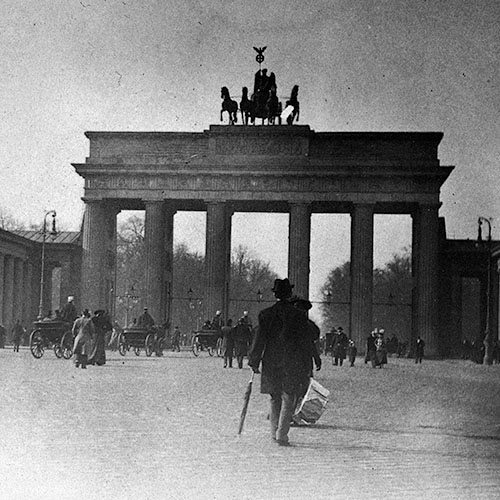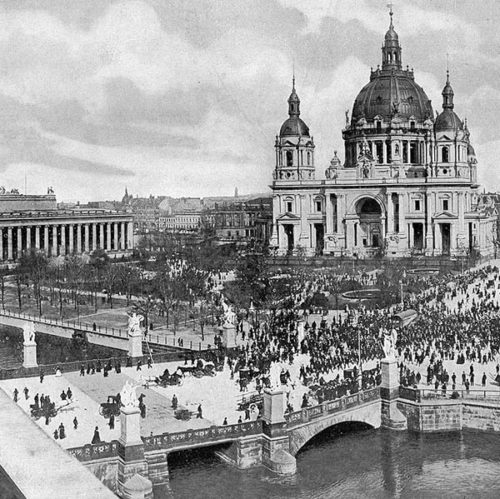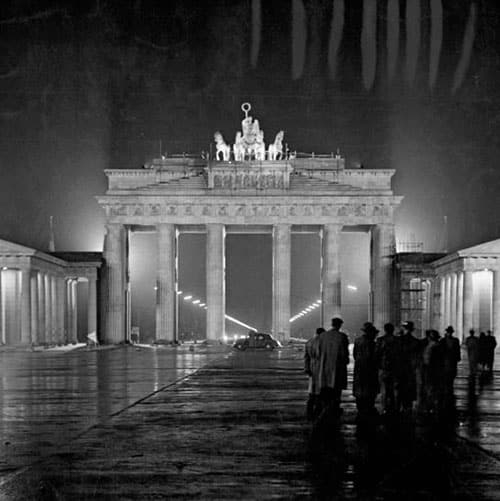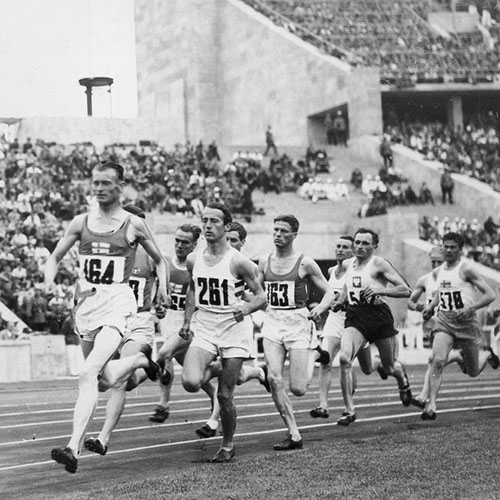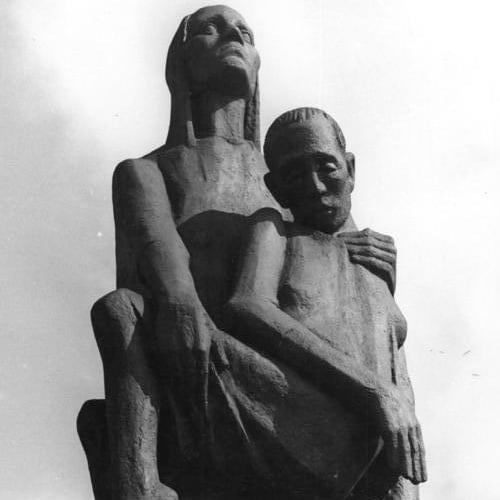Part number 199 398 500 A in the Volkswagen component catalogue bears the distinction of being the company’s most popular product, sold in-fact more than any individual car produced by the Wolfsburg-based firm. Neither a nut, nor a bot, nor a catalytic converter (a-hem), part number 199 398 500 A is actually a sausage.
But no ordinary sausage.
Manufactured since 1973 and initially sold in the company canteen – before distribution expanded to supermarkets, stores, and football stadiums across Germany – this beechwood-smoked pork cylinder is the main component in what is arguably the most celebrated culinary concoction of post-war German cuisine – the humble Currywurst.

Around 20,000 sausages are produced per day by an in-house team of butchers, to be paired with a Volkswagen trademark tomato sauce (part 199 398 500 B). As the company’s factory in Wolfsburg is the largest factory in the world, with over 60,000 employees, that’s enough to make a substantial dent in the 6.7 million Volkswagen-branded currywurst sausages produced annually.
Every year, Germans eat an estimated 800 million portions of Currywurst – that breaks down to almost ten per person, per year.
Only a fraction of those originating from the Wolfsburg factory.
Although not everyone is a fan: former US President George W Bush famously pushed his Currywurst around his plate before leaving it mostly un-eaten when dining with then German chancellor (and devoted advocate of the Wurst) Gerhard Schröder in 2002.
As popular as it is in Germany at least, the provenance of the Currywurst is largely based on legend – with a Berlin kiosk owner named Herta Heuwer credited with introducing this combination of fried then chopped Bratwurst sausage and faintly tangy ketchup sauce, in September 1949.
–
The Sausage Lady From Königsberg
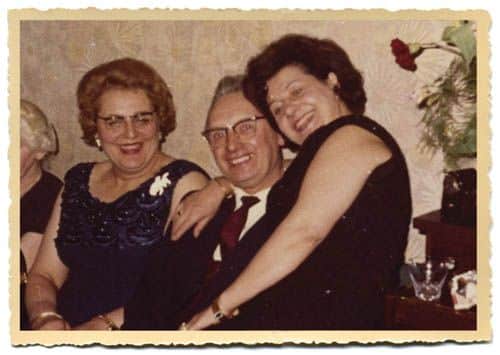
Heuwer was born in 1913, the year before the start of WWI, in the city of Königsberg – the birthplace of Immanuel Kant, and where the Elector of Brandenburg, Frederick III, would crown himself the first King in Prussia in 1701.
After moving to Berlin in the mid-1920s, Herta Heuwer would complete an apprenticeship as a seamstress and from 1936 until 1940 work at the prestigious KaDeWe department store in Berlin’s affluent Charlottenburg district. Five years later, at the end of WWII, she remained in the city, helping to clear the ruins of this district as one of the much revered Trümmerfrauen (rubble women).
Her introduction to the business of sausage selling came in August 1949, when she opened a small Imbiss (snack stop) on the corner of Kantstraße and Kaiser-Friedrich-Straße in West Berlin.
Long since gone, although now recognised with an honourary plaque (the only one of more than 300 in the neighbourhood for anything food related), it is here where Heuwer is reported to have invented the Currywurst – the ‘steak for the common man’. According to local lore, sourcing curry powder, and possibly Worcestershire sauce, from British soldiers stationed in the city, to make an ersatz Ketchup – in response to post-war shortages. Masking the low quality of sausage meat at the time may have also played a role.
Proving perhaps, in this instance at least, that scarcity is indeed the mother of invention.
On September 4th 1949 – the date it is said Currywurst officially came into being – Herta Heuwer would start selling ‘Spezial Curry Bratwurst’ from her stall. By the middle of the 1950s, this would be simplified as the ‘Currywurst’. The sausage lady from Königsberg’s empire would soon grow to include a stand next to the Red Light District of Stuttgarter Platz at Kaiser-Friedrich-Straße 57, open day and night, and employing 19 servers.

On February 21st 1959, Herta Heuwer’s sauce was officially recognised, at least in some sense, by the German patent office (Patent number 721319) under the trademark name, Chillup. Although due to a quirk of German patent law, the actual sauce itself (the ingredients) were not recognised – which meant that Heuwer did not have to disclose the exact recipe for her mixture.
A secret she took to her grave in 1999 – despite being courted by numerous food companies, including Kraft, to acquire her unique formula.
In 2019, the Berlin State Mint celebrated the 70th anniversary of the invention of the Currywurst by introducing a coin bearing Herta Heuwer’s face.
Even Google would produce a celebratory Doodle for her 100th birthday, featuring a plate of Currywurst.

But is it truly fair to say Heuwer was responsible for inventing this cult snack?
–
The Wurst Of Them All

While Herta Heuwer’s legacy lives on, her sausages stalls do not.
Instead in Berlin alone there are innumerous vendors across the city offering variations on the theme. As Heuwer’s original recipe is lost in time, the more than 60 million Currywurst eaten in Berlin each year provide a diverse experience for the palette. With even Halal sausages sold using beef instead of pork.
And of course, as times change, Currywurst also changes with the time, as there are plenty of establishments across Berlin – and Germany – that now also offer vegetarian and vegan versions of this street food classic.
While the future of this savoury sausage snack appears to be without doubt, there still remains some minor controversy regarding its exact origin.
If we are to assess the origin of the Currywurst, it would, of course, be useful to first define its original proportions:
Gratuitously slathered in a wave of tangy tomato sauce, the Currywurst sausage now typically comes in two variations – with and without skin. Which translates as with or without the intestine wrapping that many sausages are usually prepared in.
The original concept of Currywurst, however, was of a chopped, skinless sausage, served smothered in a fake tomato ketchup, eventually also dished out with french fries on the side.
Herta Heuwer’s claim to have been the first to have invented the Currywurst could be deemed problematic when considering that predating her possible creation, it was possible to similarly buy a Zigeunerwurst (a gypsy sauce sausage), although this combination was of a tomato paprika sauce – often now called Hungarian Sauce or Paprika Sauce (as gypsy is considered a derogatory term). The derivation of this dish is unclear (although the ‘Gypsy Sauce’ is said to date to 1903) and it is far from popular, to the point of being classified as obscure. Nor can we consider this a take on the classic American ketchup.
Which is exactly what Heuwer was offering: chopped cheap sausage; fake ketchup sauce.
The problems in Herta Heuwer’s story appear in the fine-print:

Heuwer would talk, when reminiscing about September 4th 1949 and serving her first Currywurst (then ‘Spezial Curry Bratwurst’) as remembering the rain falling on the city – although weather reports detail that this was a distinctly dry day. Perhaps then the day is wrong?
Additionally, another Berlin sausage seller that also started production in 1949 – named Maximillian – would state that the introduction of Heuwer’s sauce was far from the initial success it is popularly made out to be. Instead it was only with subsequent revisions in the 1950s that the dish gained its fans, and its notoriety.
The two owners of Maximilian, Max Brückner (who is often credited with introducing the skinless sausage to Berlin immediately after WWII) and Frank Friedrich, worked with Herta Heuwer to supply sausages to her stand. With Friedrich stating that it was his intervention that guided the unique taste of Heuwer’s sauce and led to its success.

Maximilian still exists and markets a sauce based on Heuwer’s long lost recipe – said to have been reborn following a collaboration between Heuwer’s niece and Frank Friedrich.
The company, however, openly pays homage to Heuwer as the originator of the original Currywurst concept (cheap chopped sausage and fake ketchup), while celebrating their role in the development of the sauce.
Beyond this, there are still some voices that claim that the title belongs to the city of Hamburg, in particular Uwe Timm – author of the novella The Development of the Currywurst – who has described eating a Currywurst in the Hanseatic city in 1947 – two years before Herta Heuwer’s stand started serving the snack. Although his claim remains unverified and attributed only to his recollection.
Comically a group of Hamburg residents even formed a tongue-in-cheek club following the release of a film version of Timm’s book to claim the city’s central role in the story of the introduction of the Currywurst. With a plaque introduced (now gone) on am Großneumarkt in the city’s Neustadt.
Hamburg can even boast to have been home to the first sausage stand to be recognised in the prestigious Gault Millau food guide (although this establishment has since closed down…) – a distinction that has eluded the eateries in Berlin.

There is no question that the legend of the Currywurst belongs to the Cold War West, although ironically one of the Berlin’s most popular sausage stalls, famous for its Currywurst, is actually in the former East of the city – Konnopke’s Imbiss, under the U-bahn tracks at Eberswalder Station. The owner of the stall would claim to have been introduced to the Currywurst in the 1950s in West Berlin, before the construction of the Berlin Wall.
This iconic snack continues to be popular, although technically no longer the most successful fast food eat in the city – having long since lost that title to the Döner Kebab as Berlin’s cheap sustenance of choice.
Regardless of its provenance, the association of the Currywurst with Berlin and Herta Heuwer has ensured its legacy as a symbol of ingenuity in the face of hardship – the West German Wirtschaftswunder (economic miracle) of the 1950s – and a nation seeking to reestablish and redefine itself.
And it would appear, without any direct challengers (dismissing Uwe Timm’s solitary claim), that Heuwer can claim to have both invented – and popularised – the snack.
edit: In March 2020, an association based in Berlin called the ‘Interessengemeinschaft Berliner Traditionswurstwaren’ received official recognition from the German Patent and Trademark Office that Berlin currywurst or “real currywurst” (currywurst made from skinless sausages), can only be produced in Berlin.
Which means that Berlin Currywurst will now bear the blue seal of origin from the Patent and Trademark Office.
**
Conclusion
YES
The Currywurst was invented in Berlin (West) and also popularised in the city.
Herta Heuwer’s claim remains uncontested.
***
If you’ve enjoyed reading this article, consider booking one of our private guided tours of Berlin.
HISTORICAL ARTICLES
Mythbusting Berlin

Are There Any Nazi Statues Left In Berlin? – Mythbusting Berlin
Visitors to Berlin often arrive expecting to find the physical remnants of the tyranny of the 20th century still standing – statues of dictators, triumphal arches, or bronze idols. Instead, they often find none. The stone symbols and statues of the Third Reich are still gazing down on them, however, hiding in plain sight. But why are there no statues of Hitler? Did the Allies destroy them all in 1945, or is the truth stranger
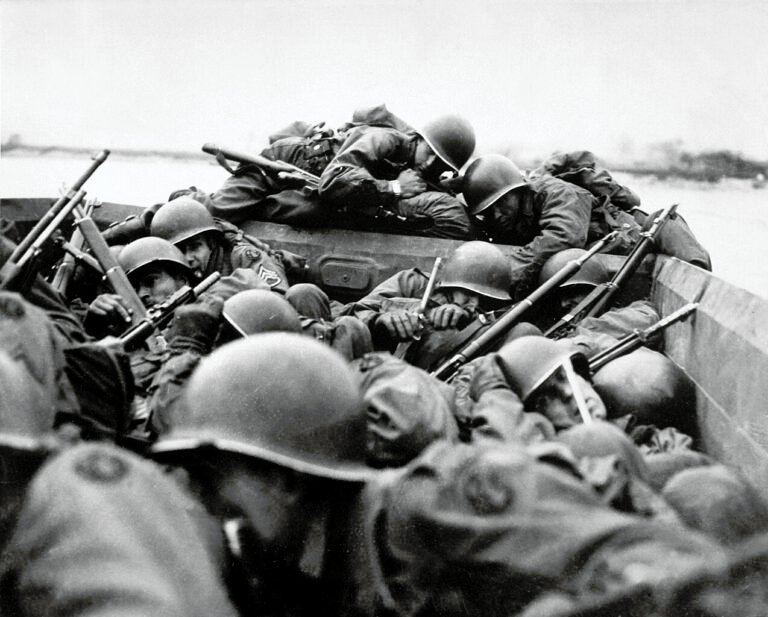
Could The Western Allies Have Captured Berlin? – Mythbusting Berlin
To contemplate a Western Allied capture of Berlin in 1945 is to challenge the established endgame of the Second World War. What was the true military and logistical feasibility of a Western Allied assault on the Nazi capital? What factors truly sealed Berlin’s fate, and what might have changed had the Allies pushed eastward?
Answering these questions means delving into the complex interplay of logistics, political maneuvering, and the competing visions for a post-war world
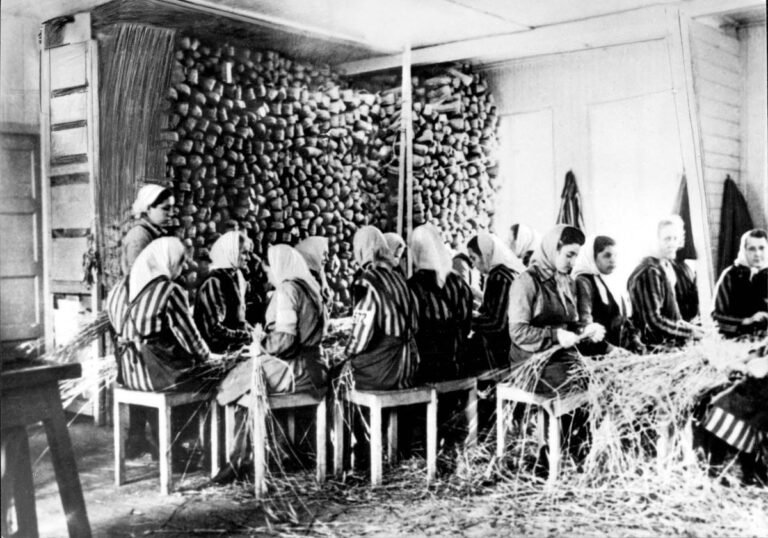
Did Any Of The Rothschild Dynasty Die In The Holocaust? – Mythbusting Berlin
The Rothschild name is synonymous with immense wealth, influence, and persistent conspiracy theories—especially during the era of Nazi Germany. Often targeted by antisemitic propaganda, the family’s survival during World War II has sparked myths about their supposed immunity from Nazi persecution. But did any Rothschild family member actually perish in the Holocaust? This article explores that compelling question, unraveling historical misconceptions and revealing the reality behind one of Europe’s most famous dynasties.
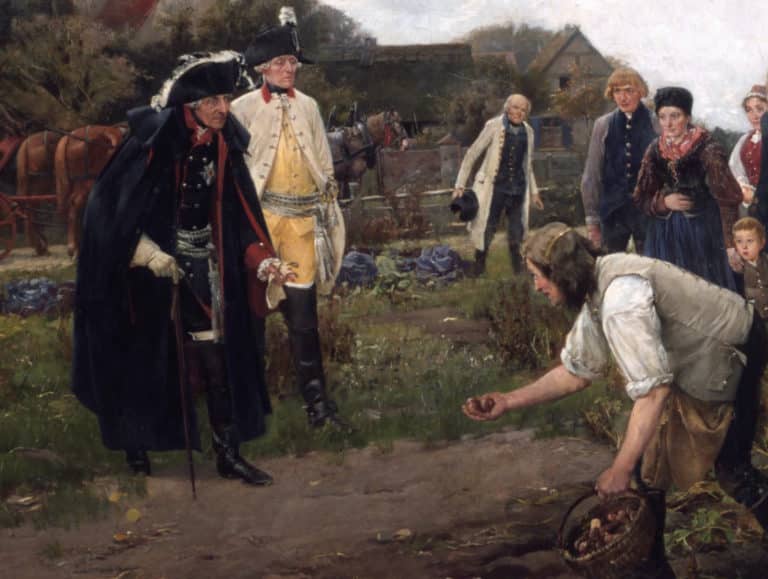
Did Frederick The Great Introduce The Potato To Germany? – Mythbusting Berlin
One of the more bizarre claims to fame attributed to the first King of Prussia is that the man who would go down in history known as Frederick the Great introduced the potato to Germany during his reign back in the 1700s. This starchy root vegetable has undoubtedly become a staple part of German cuisine – an essential addition to any plate of Schnitzel, Schweinshaxn, and Königsberger Klopse – however, whether Frederick the Great is
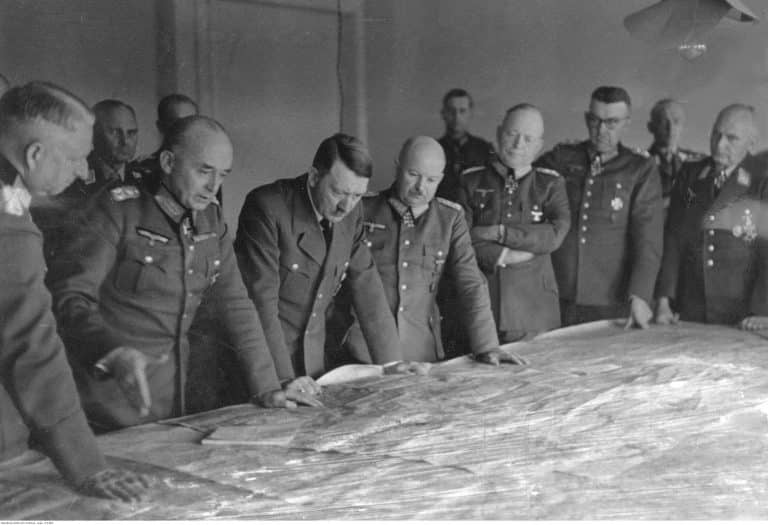
Did Hitler Escape To Argentina In 1945? – Mythbusting Berlin
Although Nazi leader, Adolf Hitler, certainly remains an inescapable figure, could there be any truth to the story of his escape to Argentina in 1945? That the most wanted man on earth could simply vanish, to spend the rest of his life peacefully in South American obscurity captivates imaginations. Yet, despite numerous investigations, this tale persists primarily as myth—fueled by speculation, hearsay, and conspiracy theories.
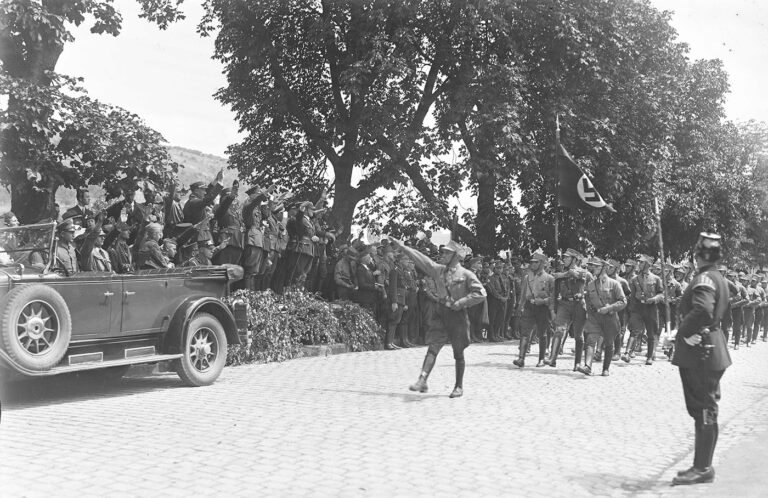
Did Hugo Boss Design The Nazi Uniforms? – Mythbusting Berlin
The idea that Hugo Boss – the man whose name now adorns expensive suits and fragrances – was the creative genius behind the Nazi uniforms suggests a terrifying collision of haute couture and holocaust – a marriage of high style and high crimes. The image is striking: a German tailor sketching the ultimate villain’s costume. But history, as usual, is far messier, more bureaucratic, and more banal than the internet memes suggest. To understand who
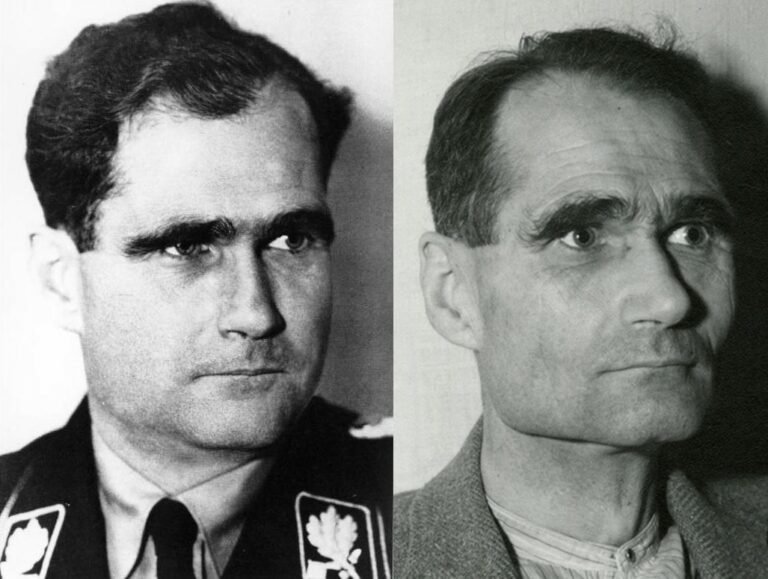
Did Rudolf Hess Really Commit Suicide? – Mythbusting Berlin
On a summer’s day in 1987, the last Nazi war criminal of the Nuremberg trials was found dead in a prison built for hundreds, yet for two decades, housed only him. The official verdict was suicide, a straightforward end to a life defined by fanaticism, delusion, and contradiction.
But the simplicity of the report belied the complexity of the man and the 46 years he had spent in Allied custody. In the meticulously controlled
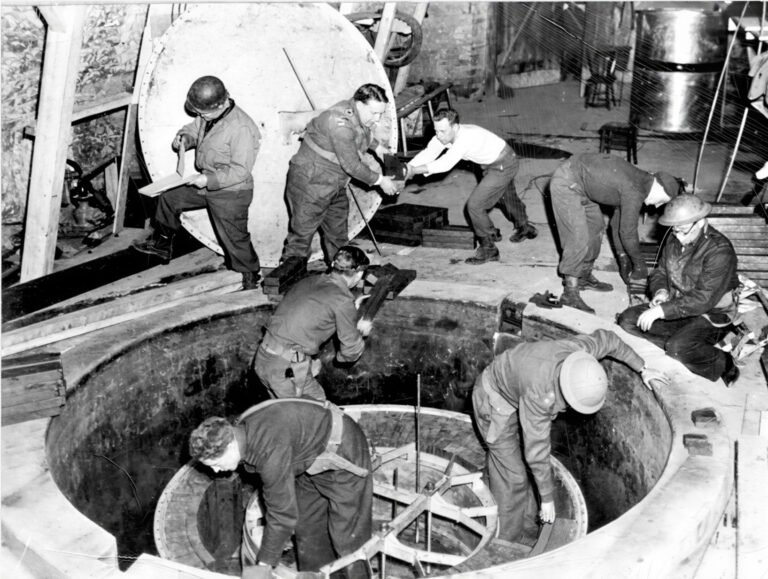
Did The Nazis Develop Nuclear Weapons? – Mythbusting Berlin
The Nazi obsession with super-weapons became so serious in the closing stages of the Second World that Adolf Hitler personally believed that such ‘Wunderwaffen’ both existed in a usable form – and would save the country from defeat. Had the Nazis managed to develop nuclear weapons by 1945 – the outcome of the war would surely have been different. But how close were Hitler, Himmler, and his henchmen to developing an A-bomb?

Did The Nazis Invent Decaf Coffee? – Mythbusting Berlin
Persistent rumors claim that Nazis preferred their coffee anything but pure, leading some to wonder if they might have influenced the development of decaffeinated coffee. Although decaf was already widely available across Europe by the mid-20th century, speculation continues: could the Nazis really have played a role in popularizing—or even discovering—this caffeine-free alternative, or is this simply another caffeinated conspiracy cooked up to sensationalize an ordinary historical detail?

Did The Nazis Invent The Bicycle Reflector? – Mythbusting Berlin
The fruits of wartime ingenuity are plenty – so many, in-fact, that it has become somewhat of a worn cliche that as the guns start firing the innovators get to work, often solving problems while providing more problems for the enemy to overcome.The kind of progress that results in the production of newer improved, more lethal weapons, such as to increase the chances of victory.
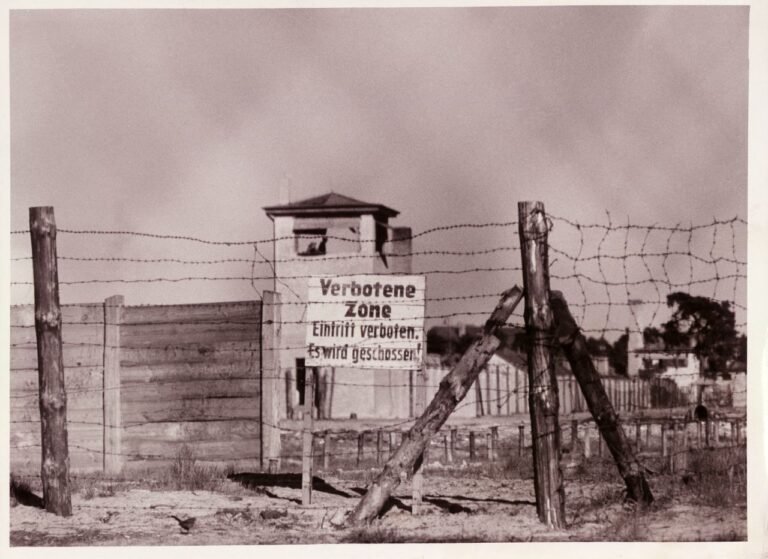
Did The Nazis Run The Largest Counterfeiting Operation In History? – Mythbusting Berlin
During the Second World War the Nazis masterminded an astonishing plot to destabilise Britain by flooding its economy with counterfeit banknotes. Crafted in secret by concentration camp prisoners, this forged fortune became the most ambitious counterfeiting operation ever attempted. But was it history’s largest? Dive into the extraordinary tale of Operation Bernhard,
rife with deception, survival, and intrigue—revealing the truth behind one of the Third Reich’s most audacious schemes and its surprising legacy.
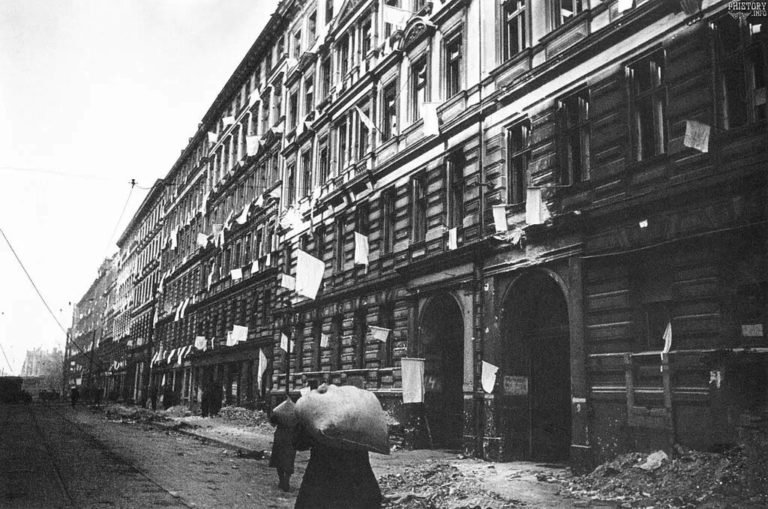
Did The Second World War End In Berlin? – Mythbusting Berlin
When is a war ever truly over? When the last shot is fired in anger would seem like the best measure. Rarely, though, is it possible to gain insight into such a moment.
Remarkably, a record still exists of such a moment at the end of the First World War on the Western Front. A seismic register and recording of the last belching battery of British guns firing artillery across no-man’s-land, followed by a profound
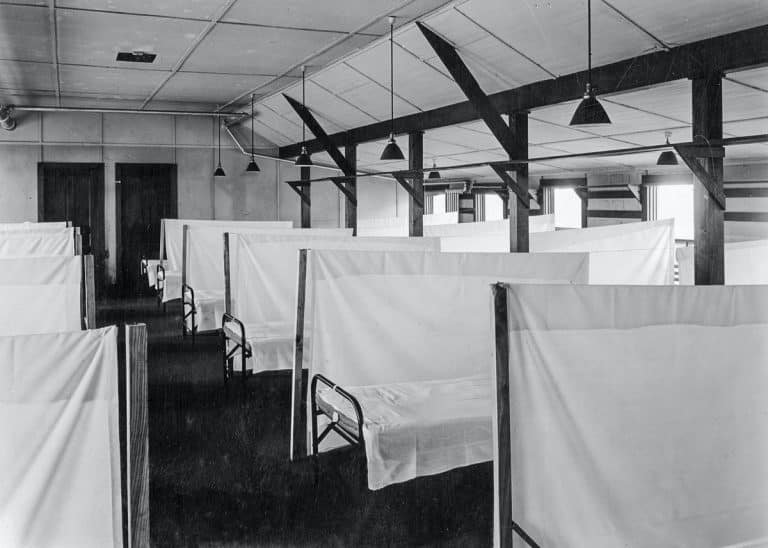
Did The Spanish Flu Pandemic Help The Nazis Take Power? – Mythbusting Berlin
The devastating Spanish Flu pandemic of 1918-1919 struck amid Germany’s post-war turmoil, compounding social instability, economic hardship, and widespread political disillusionment. Could this catastrophic health crisis have indirectly paved the way for Nazi ascension? While often overshadowed by war and revolution, the pandemic’s profound psychological and societal impacts arguably contributed to the perfect storm, enabling extremist ideologies—including Nazism—to gain popularity and ultimately seize power in a fractured Germany.

How Many Assassination Attempts On Adolf Hitler Were There? – Mythbusting Berlin
Nazi leader, Adolf Hitler, projected an aura of invincibility, a man of destiny shielded by providence. But behind the carefully constructed image of the untouchable Führer lies a story of constant threat, of bombs that failed to detonate, and errant bullets that missed their mark. Unearth the hidden history of the numerous attempts on Hitler’s life as we explore the courage of those who tried to change the course of history and the devil’s luck

How Many People Died Trying To Escape East Germany? – Mythbusting Berlin
The image of the Berlin Wall is seared into our collective memory, a concrete symbol of Cold War oppression. We think of the daring escapes and the tragic deaths of those who failed. But that well-known number is only a fraction of the truth. The story of those who died trying to escape East Germany is far broader and more complex than most imagine, stretching along a thousand-kilometer border and out into the cold waters
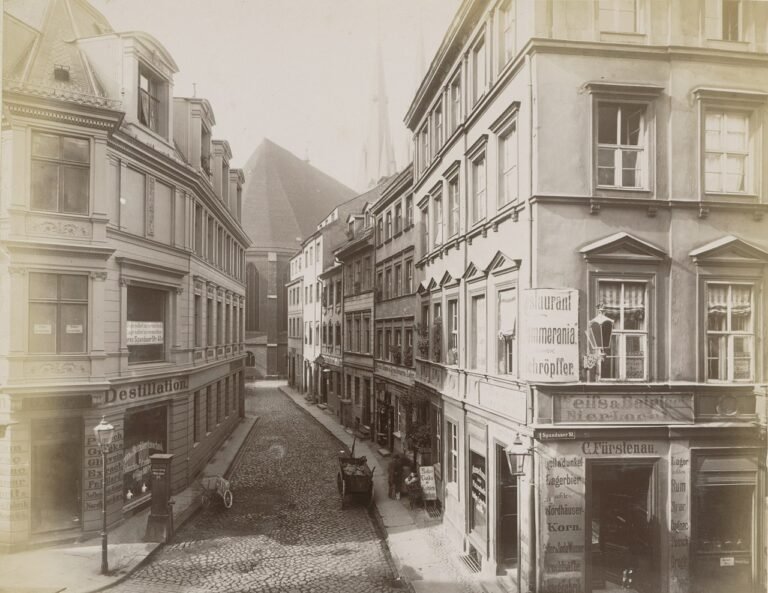
How Old Is Berlin? – Mythbusting Berlin
A relatively new arrival in Europe, Berlin is over 1000 years younger than London, nevermind Rome or Athens, Jerusalem or Jericho. Just how old is Berlin though?
A question fraught with false assumptions and distortions – that has more often than not been answered with propaganda as it has with the cold hard truth.
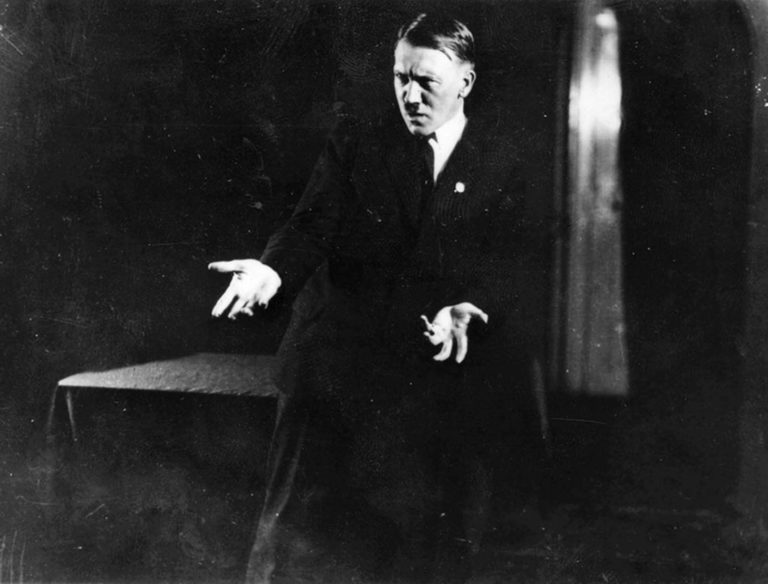
Was Adolf Hitler A Drug Addict? – Mythbusting Berlin
Solving the enigma of the ‘Führer’ has become a preoccupation for many, since the arrival of the Austrian-German onto the world stage – although moving beyond the mythology without falling into the trap of prejudically extrapolating on the psychopathography of Hitler or demonising so as to excuse his actions has proven problematic. What to make of the man who became more than the sum of his masks? The painter; the military dilettante, the mass murderer,

Was Adolf Hitler Gay? – Mythbusting Berlin
In the shadowy corridors of Third Reich history, few questions provoke as much tabloid curiosity and scholarly exasperation as the sexuality of Adolf Hitler. For decades, rumors have swirled—whispered by political enemies in 1930s Munich, psychoanalyzed by American spies in the 1940s, and sensationalized by revisionist authors today. Was the dictator who condemned thousands of men to concentration camps for “deviant” behavior hiding a secret of his own? By peeling back the layers of propaganda,
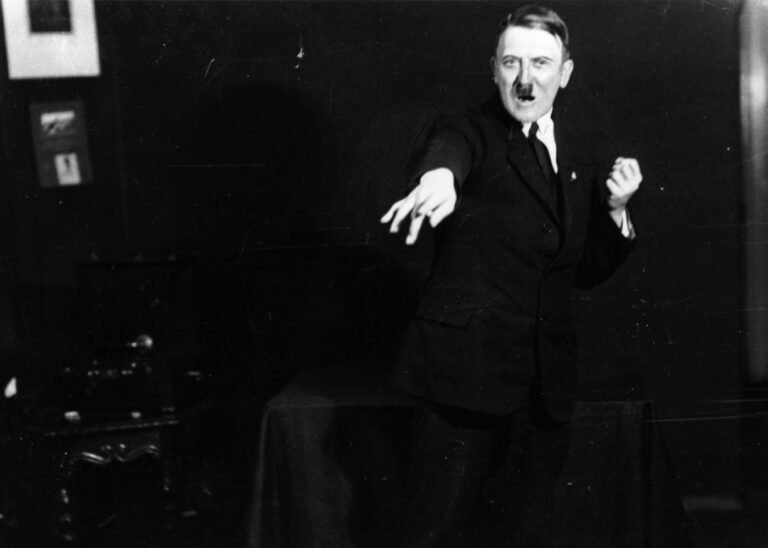
Was Adolf Hitler Jewish? – Mythbusting Berlin
Was the dictator who orchestrated the murder of millions of European Jews secretly one of them? It is perhaps the darkest irony imaginable, a story whispered for decades in backrooms, bars, and conspiracy forums alike. The most-common rumour – the ‘Frankenberger Myth’ – suggests that Adolf Hitler’s paternal grandfather was Jewish, a secret so damaging it could have unraveled the entire Nazi regime. But where does this claim come from? And, more importantly, is there
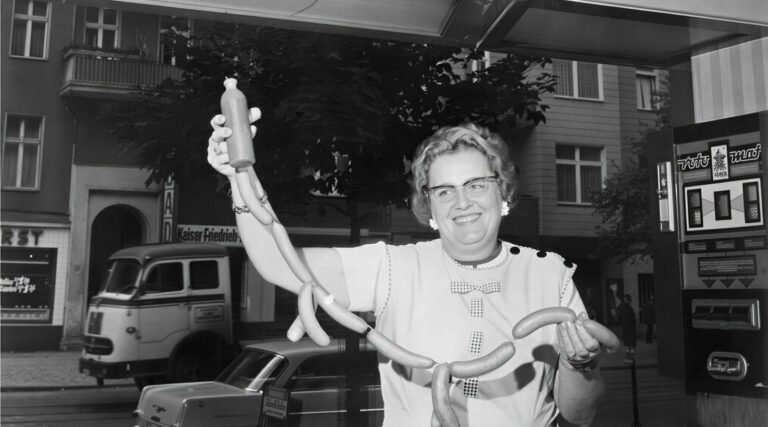
Was Currywurst Invented In Berlin? – Mythbusting Berlin
Explore the story behind what many consider Berlin’s most iconic snack—the ever-so-humble Currywurst. Often hailed as an enduring symbol of culinary creativity amid Cold War scarcity, this humble dish has inspired fierce debate about its true origin. But was it genuinely invented here in Berlin, or have proud locals simply adopted and elevated this spicy street-food favorite into legendary status all their own?









